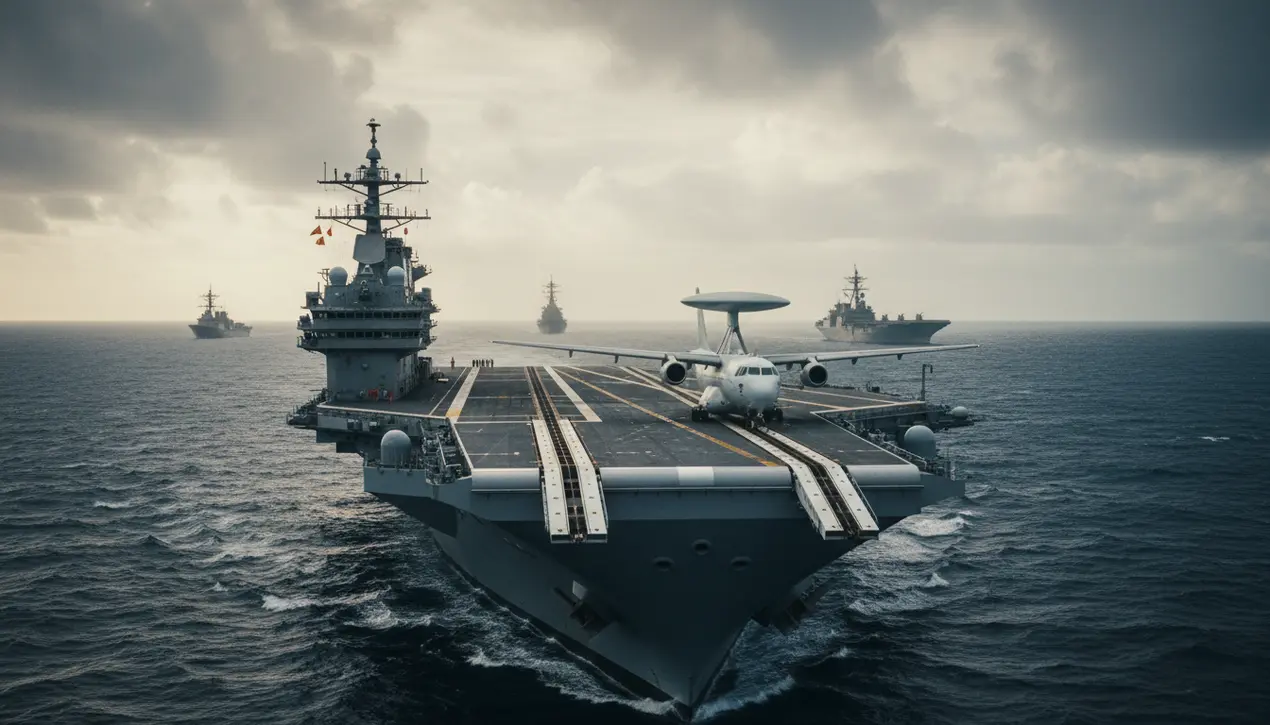
Politicsconflict & defenseMilitary Operations
China's Modernizing Navy Compared to US 7th Fleet
RO
Robert Hayes
2 hours ago7 min read
The commissioning of China's Fujian aircraft carrier by President Xi Jinping on November 5th marks a pivotal moment in naval history, elevating China to the exclusive status of being only the second nation, after the United States, to deploy an electromagnetic catapult system—a technology that dramatically enhances the sortie rate and operational flexibility of carrier-based aircraft. This significant leap in Chinese naval capability was swiftly juxtaposed against the sobering operational realities faced by the U.S. 7th Fleet, underscored by the crashes of two aircraft from the USS Nimitz into the contested waters of the South China Sea just last month.These parallel events crystallize a strategic reality often obscured by simplistic aggregate force comparisons: the relevant naval balance in the Indo-Pacific is not a straightforward tally of eleven U. S.carriers against China's three, but a far more nuanced calculation of what the United States can sustainably project and maintain within a specific theater against a rapidly modernizing, regionally concentrated peer adversary. This dynamic echoes historical precedents, such as the naval arms race between Great Britain and Imperial Germany prior to World War I, where qualitative technological shifts and regional force concentration often outweighed gross numerical superiority.The Fujian, as the first entirely indigenously designed and built Chinese carrier, represents the culmination of decades of sustained investment in naval modernization, a process accelerated under Xi Jinping's ambitious vision for a 'world-class military' by mid-century. Its electromagnetic catapults, a system the U.S. itself has grappled with on its Ford-class carriers, will enable it to launch a wider variety of aircraft, including heavier, more heavily armed fighters and critical support craft like early-warning planes, thereby closing a critical capability gap.Analysts from the Center for Strategic and International Studies note that while the U. S.Navy retains vast global experience and a larger, more diverse carrier fleet, its forces are stretched thin across multiple commitments, from the Mediterranean to the Persian Gulf. The U.S. 7th Fleet, headquartered in Yokosuka, Japan, remains the primary bulwark of American power in the Western Pacific, but it operates thousands of miles from its primary support bases, facing a Chinese People's Liberation Army Navy (PLAN) that enjoys the distinct advantages of proximity, with a dense network of homeports, airfields, and anti-access/area-denial (A2/AD) systems like the DF-21D 'carrier-killer' missile.The recent accidents involving the Nimitz, while not uncommon in the high-tempo environment of carrier operations, highlight the immense strain and risks inherent in maintaining a continuous forward presence. The strategic consequence is a gradual but perceptible erosion of uncontested U.S. naval primacy in the Western Pacific.China is not seeking to mirror the U. S.Navy's global power-projection model; rather, it is crafting a force optimized for sea control within the First Island Chain, a strategy that effectively turns the geography of the South and East China Seas into a defensive shield. This has profound implications for regional allies like Japan, the Philippines, and Taiwan, whose security assurances have long been underpinned by the perceived invincibility of American carrier groups.The situation demands a recalibration of U. S.strategy, potentially deemphasizing vulnerable, high-value assets like supercarriers for certain scenarios in favor of a more distributed fleet architecture involving submarines, long-range missiles, and unmanned systems, as championed by the Pentagon's Offset Strategy. The chessboard of the Pacific is being reset, not with a single move, but through the patient, determined accumulation of technological and tactical advantages by Beijing, challenging Washington to adapt to a new, more complex era of great power competition at sea.
#featured
#China navy
#US 7th Fleet
#aircraft carriers
#Fujian
#South China Sea
#military balance
Stay Informed. Act Smarter.
Get weekly highlights, major headlines, and expert insights — then put your knowledge to work in our live prediction markets.
Comments
Loading comments...
© 2025 Outpoll Service LTD. All rights reserved.